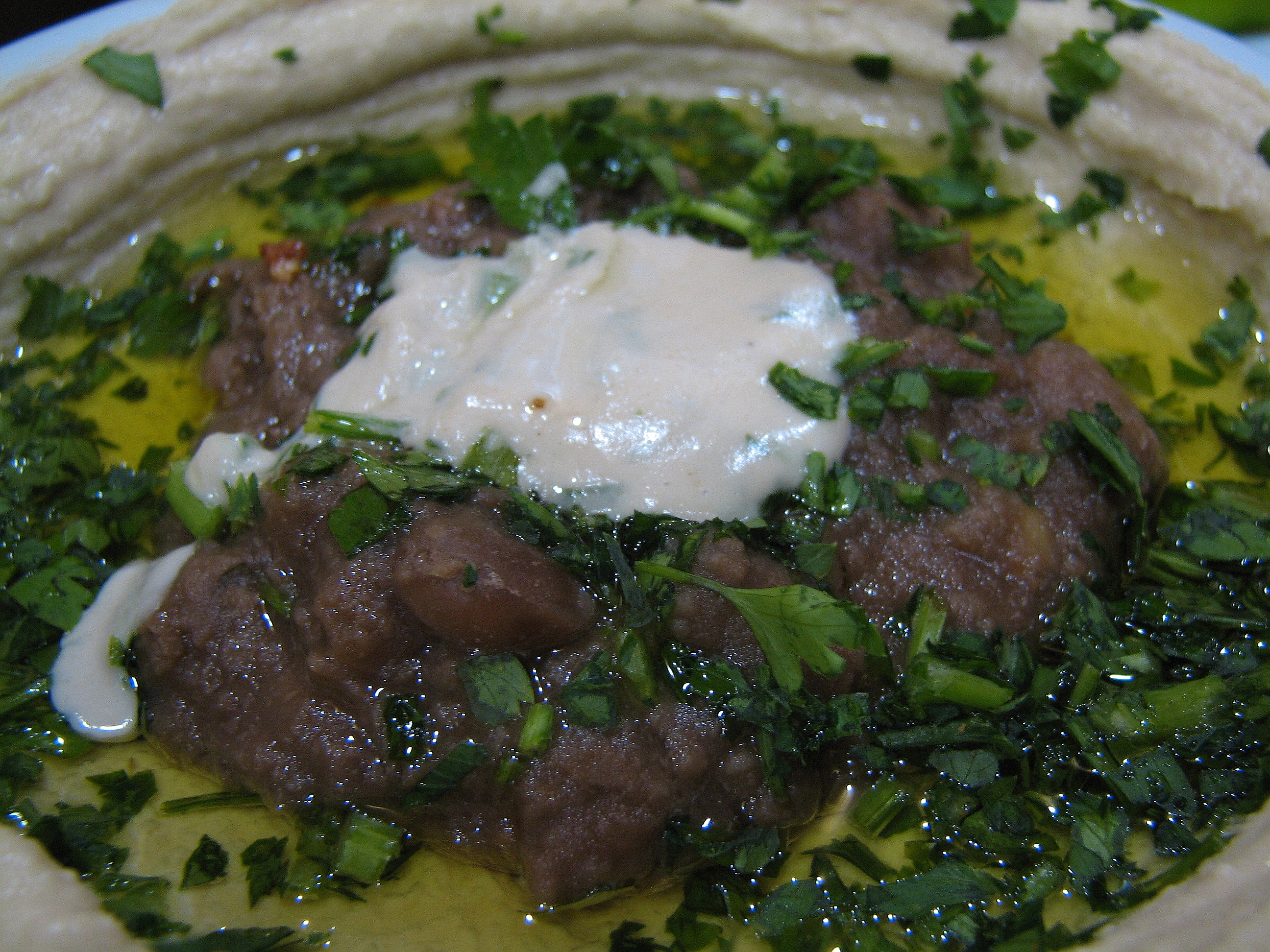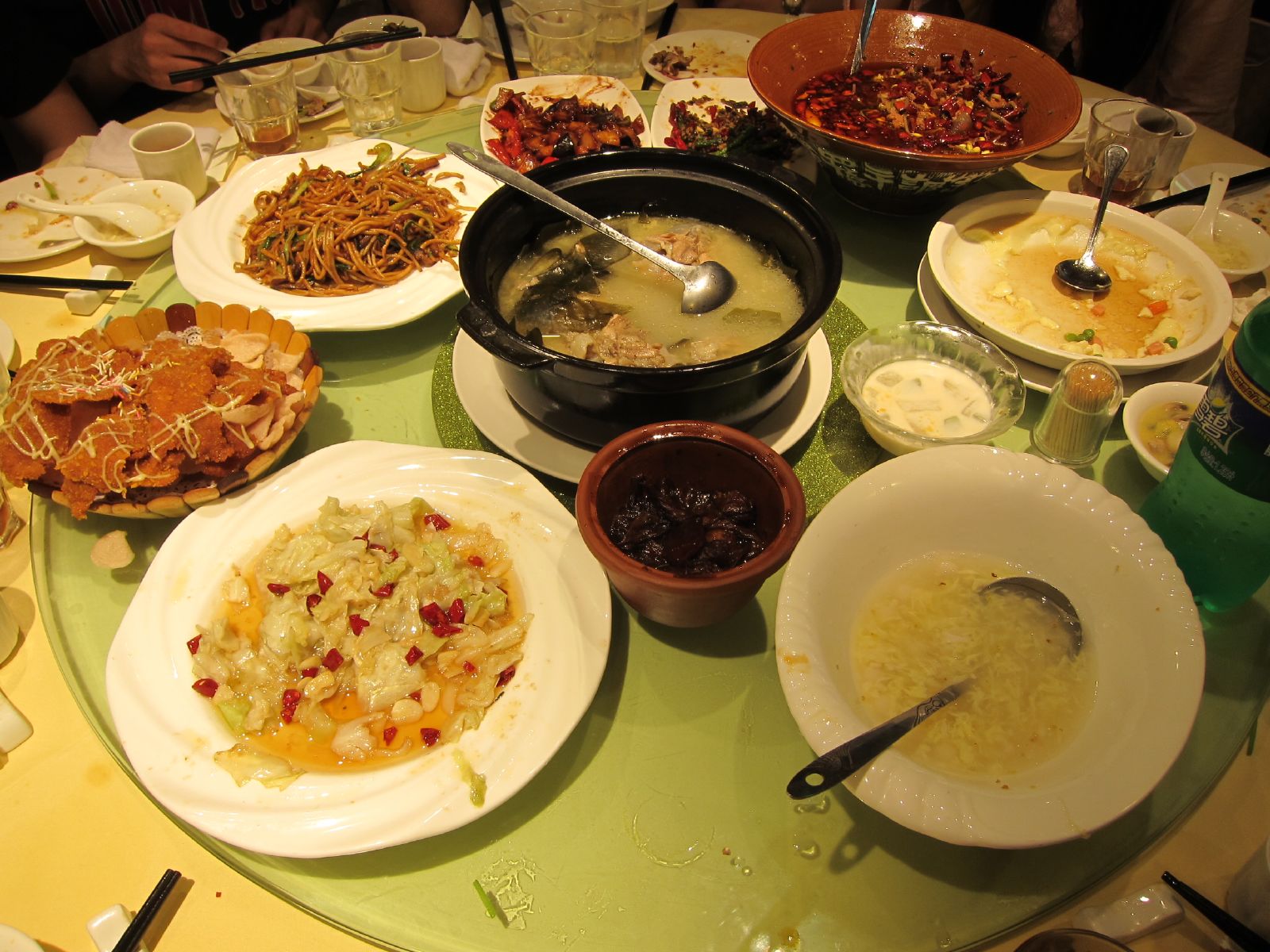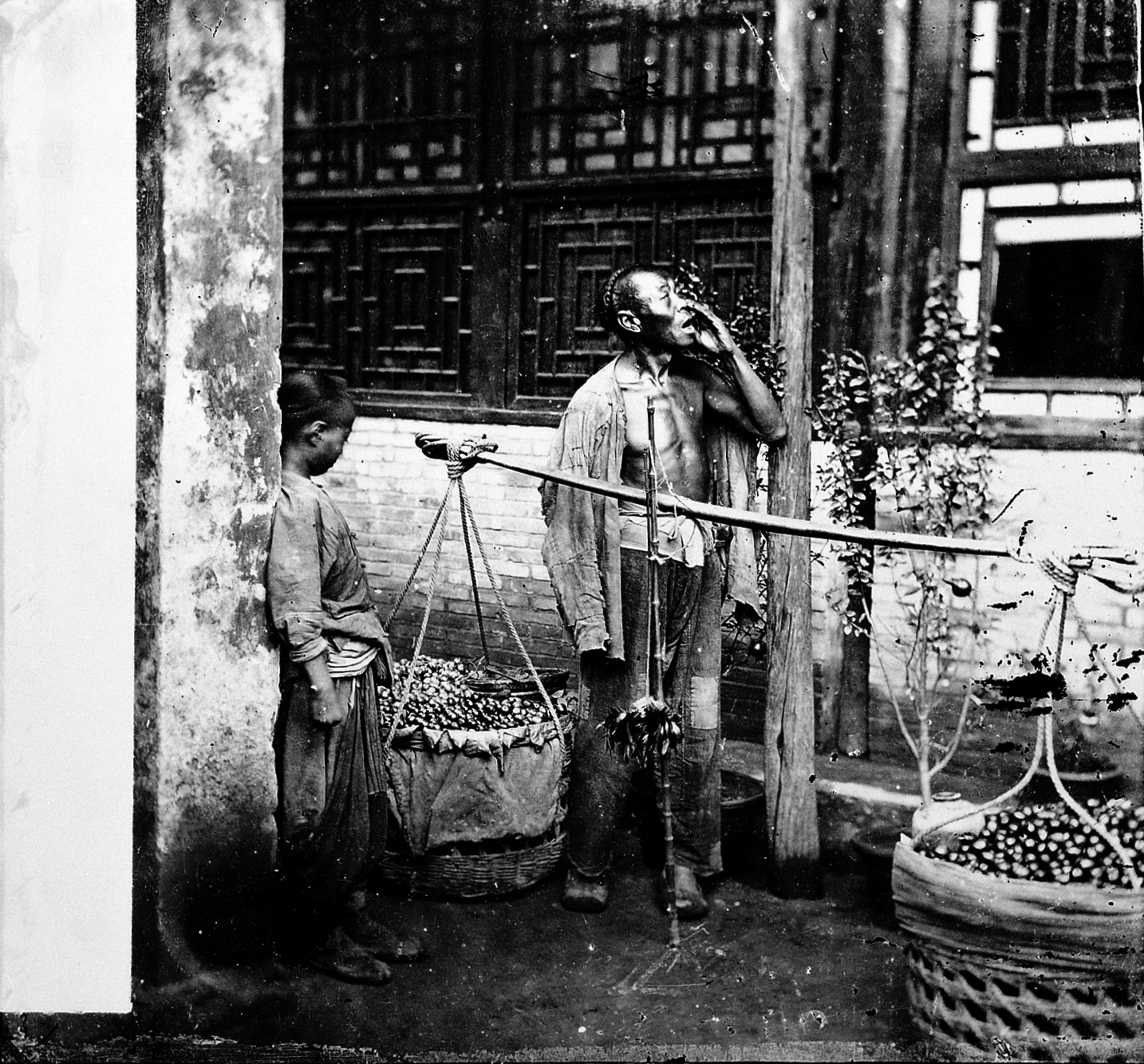|
Dandan Noodles
Dandan noodles or ''dandanmian'' (), literally "carrying-pole noodles", is a noodle dish originating from Chinese Sichuan cuisine. It consists of a spicy sauce usually containing preserved vegetables (often including ''zha cai'' (榨菜), lower enlarged mustard stems, or ''ya cai'' (芽菜), upper mustard stems), chili oil, Sichuan pepper, minced pork, and scallions served over noodles. The dish can either be served dry or as a noodle soup. The ''dandanmian'' originated in Chengdu, the capital of Sichuan province. The original dish is served with no soup in a small bowl covered in a ''mala'' meat sauce and pickled vegetables, with peanuts and spring onions served on top. The soup variant is from Hong Kong and is more widespread across the rest of China but it is uncommon in Sichuan itself where the authentic style dominates. Sesame paste or peanut butter is sometimes added, and occasionally replaces the spicy sauce, usually in the American Chinese style of the dish. In this cas ... [...More Info...] [...Related Items...] OR: [Wikipedia] [Google] [Baidu] |
Shanghai
Shanghai (; , , Standard Mandarin pronunciation: ) is one of the four direct-administered municipalities of the People's Republic of China (PRC). The city is located on the southern estuary of the Yangtze River, with the Huangpu River flowing through it. With a population of 24.89 million as of 2021, Shanghai is the most populous urban area in China with 39,300,000 inhabitants living in the Shanghai metropolitan area, the second most populous city proper in the world (after Chongqing) and the only city in East Asia with a GDP greater than its corresponding capital. Shanghai ranks second among the administrative divisions of Mainland China in human development index (after Beijing). As of 2018, the Greater Shanghai metropolitan area was estimated to produce a gross metropolitan product (nominal) of nearly 9.1 trillion RMB ($1.33 trillion), exceeding that of Mexico with GDP of $1.22 trillion, the 15th largest in the world. Shanghai is one of the world's major centers for ... [...More Info...] [...Related Items...] OR: [Wikipedia] [Google] [Baidu] |
Sesame Paste
Tahini () or tahina (, ) is a Middle Eastern condiment made from toasted ground hulled sesame. It is served by itself (as a dip) or as a major ingredient in hummus, baba ghanoush, and halva. Tahini is used in the cuisines of the Levant and Eastern Mediterranean, the South Caucasus, as well as parts of North Africa. Sesame paste (though not called tahini) is also used in some East Asian cuisines. Etymology ''Tahini'' is of Arabic origin and comes from a colloquial Levantine Arabic pronunciation of (), or more accurately (), whence also English ''tahina'' and Hebrew ''t'china'' . It is derived from the root , which as a verb means "to grind", and also produces the word , "flour" in some dialects. The word ''tahini'' appeared in English by the late 1930s.Mariposa, ''Hollywood Glamour Cook Book'', 1940, p. 101. ''Tahini'' is a loanword from modern Greek ''tachíni'' () which was originally adopted from the Ottoman Turkish ''"tahin"'' . In Turkish and also in Italian, the ... [...More Info...] [...Related Items...] OR: [Wikipedia] [Google] [Baidu] |
Sichuan Cuisine
Sichuan cuisine, alternatively romanized as Szechwan cuisine or Szechuan cuisine (, Standard Mandarin pronunciation: ), is a style of Chinese cuisine originating from Sichuan Province. It has bold flavours, particularly the pungency and spiciness resulting from liberal use of garlic and chili peppers, as well as the unique flavour of Sichuan pepper. Some examples are Kung Pao chicken and Yuxiang shredded pork. There are many local variations within Sichuan Province and the neighbouring Chongqing Municipality, which was part of Sichuan Province until 1997. Four sub-styles of Sichuan cuisine include Chongqing, Chengdu, Zigong and Buddhist vegetarian style. UNESCO declared Chengdu, the capital of Sichuan Province, to be a city of gastronomy in 2011 to recognise the sophistication of its cooking. History Sichuan in the Middle Ages welcomed Middle Eastern crops, such as broad beans, sesame and walnuts. Since the 16th century, the list of major crops in Sichuan has even been le ... [...More Info...] [...Related Items...] OR: [Wikipedia] [Google] [Baidu] |
Chinese Noodle Dishes
Chinese can refer to: * Something related to China * Chinese people, people of Chinese nationality, citizenship, and/or ethnicity **''Zhonghua minzu'', the supra-ethnic concept of the Chinese nation ** List of ethnic groups in China, people of various ethnicities in contemporary China ** Han Chinese, the largest ethnic group in the world and the majority ethnic group in Mainland China, Hong Kong, Macau, Taiwan, and Singapore ** Ethnic minorities in China, people of non-Han Chinese ethnicities in modern China ** Ethnic groups in Chinese history, people of various ethnicities in historical China ** Nationals of the People's Republic of China ** Nationals of the Republic of China ** Overseas Chinese, Chinese people residing outside the territories of Mainland China, Hong Kong, Macau, and Taiwan * Sinitic languages, the major branch of the Sino-Tibetan language family ** Chinese language, a group of related languages spoken predominantly in China, sharing a written script (Chine ... [...More Info...] [...Related Items...] OR: [Wikipedia] [Google] [Baidu] |
Ta-a Noodles
''Ta-a mi'' (), also known as Ta-a noodles or danzai noodles, is a type of snack found in Tainan, Taiwan. Also known as "Slack Season Ta-a Noodles", they originated in Tainan (in southern Taiwan), about 130 years ago. While the general recipe is well known, some of the spices and the proportions of the various ingredients (shrimp flavored soup, shrimp, coriander, and garlic) are well guarded secrets by the different restaurants/stands that serve it. While seemingly a simple snack, foodies from all over the world have given it substantial recognition. The normal serving size is usually small, being considered more of a snack than an entree. It is also on the pricier side (relatively) at around NT$50 (US$1.60) for a small bowl. Origin Ta-a noodles are said to originate in the late Qing dynasty, around 1895. During the Tomb Sweeping Festival and summer season (July to September) each year in Taiwan, there are frequent typhoons, rendering fishing too dangerous. These "slack seasons" ... [...More Info...] [...Related Items...] OR: [Wikipedia] [Google] [Baidu] |
List Of Chinese Dishes
This is a list of Chinese dishes in Chinese cuisine. Dishes by ingredient Grain-based dishes Noodles Rice Pork-based dishes Poultry-based dishes Vegetable-based dishes Dishes by cooking method Dumplings Pastry Soups, stews and porridge Dishes by region Anhui Beijing Cantonese Chaozhou Fujian Guangxi Southern Guangxi cuisine is very similar to Guangdong cuisine. Northern Guangxi cuisine, such as the dishes below, is quite different. Hainan Hakka Hunan Hubei Jiangsu Northeast Shaanxi Shanxi Shandong Sichuan Yunnan Zhejiang Unsorted * Guokui See also * List of Chinese desserts * List of Chinese restaurants * List of Chinese sauces * List of Chinese soups * List of restaurants in China This is a list of notable restaurants in China. Restaurants * * * * * * * * * * * * * * * * Coffee and tea houses * * * * Fast food chains * * * * * * * * See also * Chinese cuisine ... [...More Info...] [...Related Items...] OR: [Wikipedia] [Google] [Baidu] |
Chinese Noodles
Chinese noodles vary widely according to the region of production, ingredients, shape or width, and manner of preparation. Noodles were invented in China, and are an essential ingredient and staple in Chinese cuisine. They are an important part of most regional cuisines within China, and other countries with sizable overseas Chinese populations. Chinese noodles can be made of wheat, buckwheat, rice, millet, oats, beans, potatoes, sweet potatoes, and even fish. There are over 1,200 types of noodles commonly consumed in China today. Chinese noodles have also entered the cuisines of neighboring East Asian countries such as Korea and Japan, as well as Southeast Asian countries such as Vietnam, Cambodia, and Thailand. Nomenclature Nomenclature of Chinese noodles can be difficult due to the vast spectrum available in China and the many dialects of Chinese used to name them. In Mandarin, miàn (; often transliterated as "mien" or "mein" ) refers to noodles made from wheat flour, whil ... [...More Info...] [...Related Items...] OR: [Wikipedia] [Google] [Baidu] |
Ramen
is a Japanese dish, Japanese noodle dish. It consists of served in a broth; common flavors are soy sauce and miso, with typical toppings including , nori (dried seaweed), menma (bamboo shoots), and scallions. Ramen has its roots in Chinese noodle dishes. Nearly every region in Japan has its own variation of ramen, such as the ''tonkotsu'' (pork bone broth) ramen of Kyushu and the ''miso'' ramen of Hokkaido. History Etymology The word ''ramen'' is a Japanese borrowing of the Standard Chinese, Mandarin Chinese ''lamian, lāmiàn'' (, "pulled noodles"). However, historian Barak Kushner argues that this borrowing occurred retroactively and that various independent Japanese corruptions of Chinese words had already led to Japanese people calling this Chinese noodle dish "ramen". One theory suggests that the Japanese mistook the Chinese particles "le" (了) or "la" (啦, a contraction of 了啊) for a "ra" sound when Chinese cooks would announce "hăo le" (好了) to communicate t ... [...More Info...] [...Related Items...] OR: [Wikipedia] [Google] [Baidu] |
Suanla Chaoshou
''Suanla chaoshou'' is a dish of Sichuan cuisine that consists of a spicy sauce over boiled, meat-filled dumplings. ''Suanla'' means "hot and sour," and ''chaoshou'' is what these particular large wontons are called in the Chinese province of Sichuan. ''Chao shou'' translates literally as "folded hands"; in the Sichuanese dialects this refers to a style of dumpling whose square wrapper is folded into two points, one crossed over the other. According to Peter Hessler (Beijing correspondent for ''The New Yorker'' and former Peace Corps teacher), "In most parts of Sichuan, you can walk into a restaurant and order ''chaoshou'' without making a sound. Cross your arms and they will understand exactly what you want." One native speaker claims the Sichuan-only name for these dumplings may have originated at one time by a dialectic transposition, i.e. "chao shou" was originally "shou chao", meaning "hand-folded". In the United States Variations on this dish are available in many Chine ... [...More Info...] [...Related Items...] OR: [Wikipedia] [Google] [Baidu] |
Cantonese
Cantonese ( zh, t=廣東話, s=广东话, first=t, cy=Gwóngdūng wá) is a language within the Chinese (Sinitic) branch of the Sino-Tibetan languages originating from the city of Guangzhou (historically known as Canton) and its surrounding area in Southeastern China. It is the traditional prestige variety of the Yue Chinese dialect group, which has over 80 million native speakers. While the term ''Cantonese'' specifically refers to the prestige variety, it is often used to refer to the entire Yue subgroup of Chinese, including related but largely mutually unintelligible languages and dialects such as Taishanese. Cantonese is viewed as a vital and inseparable part of the cultural identity for its native speakers across large swaths of Southeastern China, Hong Kong and Macau, as well as in overseas communities. In mainland China, it is the ''lingua franca'' of the province of Guangdong (being the majority language of the Pearl River Delta) and neighbouring areas such as Guang ... [...More Info...] [...Related Items...] OR: [Wikipedia] [Google] [Baidu] |
Peddler
A peddler, in British English pedlar, also known as a chapman, packman, cheapjack, hawker, higler, huckster, (coster)monger, colporteur or solicitor, is a door-to-door and/or travelling vendor of goods. In England, the term was mostly used for travellers hawking goods in the countryside to small towns and villages. In London, more specific terms were used, such as costermonger. From antiquity, peddlers filled the gaps in the formal market economy by providing consumers with the convenience of door-to-door service. They operated alongside town markets and fairs where they often purchased surplus stocks which were subsequently resold to consumers. Peddlers were able to distribute goods to the more geographically-isolated communities such as those who lived in mountainous regions of Europe. They also called on consumers who, for whatever reason, found it difficult to attend town markets. Thus, peddlers played an important role in linking these consumers and regions to wider trade ... [...More Info...] [...Related Items...] OR: [Wikipedia] [Google] [Baidu] |
Chinese American Cuisine
American Chinese cuisine is a cuisine derived from Chinese cuisine that was developed by Chinese Americans. The dishes served in many North American Chinese restaurants are adapted to American tastes and often differ significantly from those found in China. History Chinese immigrants arrived in the United States seeking employment as miners and railroad workers. As larger groups arrived, laws were put in place preventing them from owning land. They mostly lived together in ghettos, individually referred to as "Chinatown". Here the immigrants started their own small businesses, including restaurants and laundry services. By the 19th century, the Chinese community in San Francisco operated sophisticated and sometimes luxurious restaurants patronized mainly by Chinese. The restaurants in smaller towns (mostly owned by Chinese immigrants) served food based on what their customers requested, anything ranging from pork chop sandwiches and apple pie, to beans and eggs. Many o ... [...More Info...] [...Related Items...] OR: [Wikipedia] [Google] [Baidu] |






